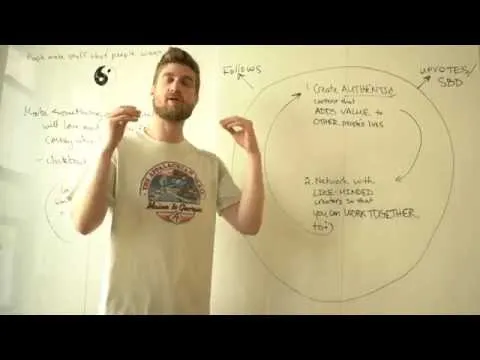Hello Steemians, I'm Steemit's Content Director and today I'd like to talk briefly about the importance of community. I keep meaning to write more on my personal account because I know how eager you all are to gain insights into the minds of Steemit Team members, but it's tough to find the time.
Part of our team ethos is to be "Doers" not "Tawkers" (Nassim Taleb's term for people who say plenty but do nothing) and even though my job is to create the official content of Steemit Inc., writing on my personal account always feels like focusing the spotlight on myself when my job is to be pointing the spotlight on the amazing work Steemit's engineers are doing to make the Steem stack the best blockchain protocol in the world for web developers, or as we like to put it "the blockchain of opportunity."
Authenticity
In order to meet my obligations to the Steemit Team as well as Steem stakeholders (you all), I can't spend an inordinate amount of time on my personal posts and if I'm being honest, it gives me a lot of anxiety to think about what people will think if I write something stupid, boring, or containing mistakes. How would it look if Steemit's Content Director ... made crappy content?
Then I remembered a video I put out wayyyy back in the day when I was just another content creator on steemit.com. In that video I disclosed the strategy I used to achieve success on the platform--what I called "Steemit's Cycle of Success." The key takeaway was the importance of creating authentic content that added value to people's lives and then finding like-minded people to collaborate with. In short, the idea was to create an authentic community. I defined "authentic" as: honest, open, and sincere. You can watch that (now slightly embarrassing) video here:
The thing is, if you spend hours refining your content, you're not really being authentic. With these posts my hope is to get back to creating authentic content in the hopes that those reading will appreciate my intentions and if they'd rather I just shut up and focus on working behind the scenes for the benefit of Steem, they can let me know in the comments! At the end of the day, everyone at Steemit just wants to make Steem better so that it can tokenize the web. To that end we answer to the community.
Back to Community
With that, I'd like to share with you some thoughts I've been having as of late about the importance of community and how, in the end, the only way that things get better is by like-minded people coming together to solve some problem that was impossible to solve on their own. In other words, in order to solve any problem, a community must be formed.
Innovation and Complexity
As many of you may know, explaining Steem to people is complicated. That's the paradox of truly innovative technologies; they require a radical reframing of how you look at a problem. This necessarily makes it difficult for people who are used to thinking about something the old way to comprehend the new path you are trying to set forth.
While there are many parts of the Steem ecosystem that can be simplified, some of the complexity is absolutely necessary. Even things as simple as Steem Power and token inflation are extremely difficult for ordinary people to understand, but completely vital to the sustainability and scalability of the stack.
The Job to be Done
Lately I've been contemplating whether this focus on the technical aspects of the technology is, in some ways, self defeating. In marketing there is a concept called the "job to be done." The idea is not to explain how your product works to your potential customer, but instead focus on why it will enable them to "get their job done."
While Steem can certainly help all kinds of people get all kinds of jobs done, as I stated before, the one thing that all solutions have in common is that they require a community. In other words, the one job everyone needs to get done, is building their community. In truth, this shouldn't be a surprise as my boss, @Ned, has been telling me this since I started! So Steem is really a communities technology. I recently spoke with the @steemmonsters team and they really drove this point home. @yabapmatt pointed out that, technically SteemMonsters could have been built on Bitcoin.
Obviously it would have been far too slow and far too expensive to really be successful, but it was technically possible. While there were numerous technical aspects of Steem which made it especially well suited for SteemMonsters, the conversation kept going back to the amazing community of Steemians they were able to tap into, not just as instant customers, but as storytellers, evangelists, and more. We're still putting the finishing touches on that interview, but it should be out soon.
While there's still a lot we can--and will--do to make Steem even better, it remains years ahead of the competition in its true value proposition: community building technology. You all are the most powerful demonstration of Steem's true unique value proposition and the fact that you are still here posting, commenting, curating, and even criticizing, is proof of that fact.
Hivemind
All of this makes me believe that @roadscape's Hivemind project will be more disruptive than people realize, even if they already thought it was going to be highly disruptive! It's not because it will enable communities on steemit.com, it's because it will multiply Steem's capabilities as a sustainable, scalable, open source, community-building technology. Even a Smart Media Token will only be as valuable as the community that is leveraging it.
That's about all I have to say about communities, time to get back to work! If you haven't already, be sure to follow @steemitblog to stay up-to-date on everything the Steemit Team is working on.
Steem on!
